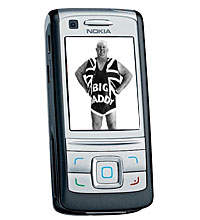 Nokia has risen to become King Of The Hill of 3G phones with a market share of 17%, with its attractive range of 3G phones trouncing products from rivals NEC and LG.
Nokia has risen to become King Of The Hill of 3G phones with a market share of 17%, with its attractive range of 3G phones trouncing products from rivals NEC and LG.
According to a report by Strategy Analytics, the phone-shifting Finns scooped a 17% of the 3G handset market in the three months from April to June, 2005.
Chris Ambrosio, director of the Strategy Analytics wireless device strategies service observed that Nokia’s hefty share of the 3G market represents nearly half of its global overall share in the global mobile market, currently standing at 33%.
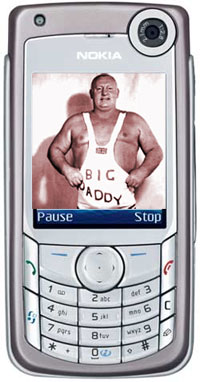 Previous 3G front-runners Motorola and LG have been overtaken by Nokia, with the report warning the manufacturers that they “have significant work to do to match up in the next battle for WCDMA phones priced below US$200 (~£111, €164~) wholesale, which will present significant mass-market opportunities in 2006 to 2010”.
Previous 3G front-runners Motorola and LG have been overtaken by Nokia, with the report warning the manufacturers that they “have significant work to do to match up in the next battle for WCDMA phones priced below US$200 (~£111, €164~) wholesale, which will present significant mass-market opportunities in 2006 to 2010”.
The study notes that the market for 3G phones is still comparatively small, with only nine million units shipped in the second quarter of 2005 – small beer compared to the total sales of 185m handsets for the same period (source UDC).
“WCDMA (3G) technology, which accounted for just 5% of total handset sales during Q2 2005, remains a market in the early stages of development, but it is worrying for a cluster of aspiring Asian vendors that Nokia has already become best in class,” commented Chris Ambrosio, director of the Strategy Analytics’ wireless device strategies service.
Nokia’s market lead has been assisted in no small part by the popularity of their acclaimed 6680 3G handset, recently lauded as the “best-in-class 3G phone” in Western Europe.
Nokia’s triumph means long faces in the Motorola offices, with the company failing to make much progress with their 3G phones, despite their funky ‘lifestyle’ GPRS phones like the V3 Razr proving a hit.
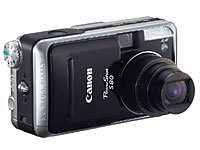 Canon has announced its new PowerShot S80 consumer camera, an eight megapixel compact camera with a wide range of auto and manual controls.
Canon has announced its new PowerShot S80 consumer camera, an eight megapixel compact camera with a wide range of auto and manual controls. The camera packs in some advanced features including real-time histogram display, FlexiZone AF/AE with a freely movable focus point and manual focus override with 21 shooting modes taking care of most lighting conditions.
The camera packs in some advanced features including real-time histogram display, FlexiZone AF/AE with a freely movable focus point and manual focus override with 21 shooting modes taking care of most lighting conditions.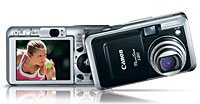 Surprisingly, RAW capture has been left off the spec list, although there’s USB 2.0 compatibility to help speedily transfer images to a PC speedily.
Surprisingly, RAW capture has been left off the spec list, although there’s USB 2.0 compatibility to help speedily transfer images to a PC speedily.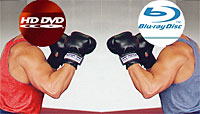 Sony and Toshiba have failed to agree on a unified format for next-generation DVDs, according to a Japanese newspaper report today.
Sony and Toshiba have failed to agree on a unified format for next-generation DVDs, according to a Japanese newspaper report today. Japan’s Yomiuri newspaper has reported that the two companies have now abandoned their efforts to develop a unified format, with negotiations falling through after both sides refused to budge.
Japan’s Yomiuri newspaper has reported that the two companies have now abandoned their efforts to develop a unified format, with negotiations falling through after both sides refused to budge.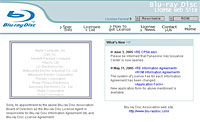 The newspaper report hasn’t been verified by either firm, although both have said that they have not ruled out the possibility of further talks at some point.
The newspaper report hasn’t been verified by either firm, although both have said that they have not ruled out the possibility of further talks at some point.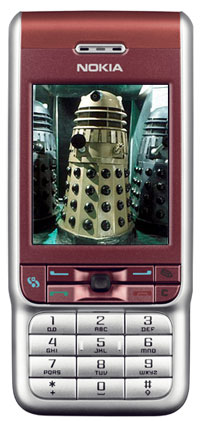 The BBC has announced that it will be offering classic episodes of “Doctor Who” and “Red Dwarf” on digital video chips for viewing on mobile phones.
The BBC has announced that it will be offering classic episodes of “Doctor Who” and “Red Dwarf” on digital video chips for viewing on mobile phones. Films can be fast forwarded, rewound and paused, just like a conventional movie player.
Films can be fast forwarded, rewound and paused, just like a conventional movie player. The first scheduled release is The Five Doctors, a 90-minute Dr Who special originally shown in 1983, followed by three episodes of cult sci-fi hit, Red Dwarf.
The first scheduled release is The Five Doctors, a 90-minute Dr Who special originally shown in 1983, followed by three episodes of cult sci-fi hit, Red Dwarf. Warner Music Group has announced a new digital music distribution mechanism based on downloads rather than physical media like CDs.
Warner Music Group has announced a new digital music distribution mechanism based on downloads rather than physical media like CDs. With far lower production costs, Bronfman claimed that the e-label will give recording artists a “supportive, lower-risk environment” (I think this means “less cash from the record company”) without as much pressure for huge commercial hits – something that could benefit artists with a more “selective audience”.
With far lower production costs, Bronfman claimed that the e-label will give recording artists a “supportive, lower-risk environment” (I think this means “less cash from the record company”) without as much pressure for huge commercial hits – something that could benefit artists with a more “selective audience”.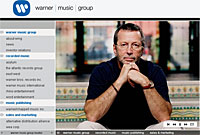 Bronfman called on the technology industry to work on digital rights management (DRM) standards, arguing that compulsory licensing – with support from P-to-P vendors – would set a price for downloaded music while forcing music companies to make their products available online to P-to-P users.
Bronfman called on the technology industry to work on digital rights management (DRM) standards, arguing that compulsory licensing – with support from P-to-P vendors – would set a price for downloaded music while forcing music companies to make their products available online to P-to-P users.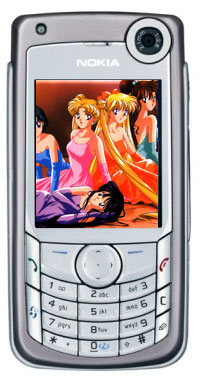 Sony Pictures Entertainment is set to triple the number of comic books it offers as mobile downloads in Japan, making the company the number one provider of “manga” downloads.
Sony Pictures Entertainment is set to triple the number of comic books it offers as mobile downloads in Japan, making the company the number one provider of “manga” downloads. Sony intends to offer more comic books than competitors like NTT Solmare, (unit of telecom firm NTT) and Toppan Printing.
Sony intends to offer more comic books than competitors like NTT Solmare, (unit of telecom firm NTT) and Toppan Printing.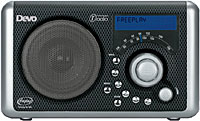 The world’s first wind-up FM and DAB digital radio, the Freeplay Devo, will be on sale in the UK soon.
The world’s first wind-up FM and DAB digital radio, the Freeplay Devo, will be on sale in the UK soon.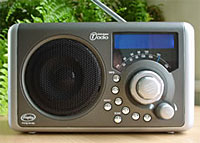 There’s a set of handy stereo RCA (phono) sockets onboard, letting users plug the radio into their home entertainment system, with a built in headphone socket for late night listening.
There’s a set of handy stereo RCA (phono) sockets onboard, letting users plug the radio into their home entertainment system, with a built in headphone socket for late night listening. When the batteries run out, a 60-second burst of action on the wind-up lever should reward the user with 3-5 minutes DAB reception or one hour of FM pleasure at normal volume
When the batteries run out, a 60-second burst of action on the wind-up lever should reward the user with 3-5 minutes DAB reception or one hour of FM pleasure at normal volume Amazon is testing its new A9 mapping service that lets users view street-level photos of city blocks surrounding a requested address.
Amazon is testing its new A9 mapping service that lets users view street-level photos of city blocks surrounding a requested address. Amazon first introduced street-level photographs of specific addresses as part of its Yellow Pages listings, but the company believes that consumers will find the A9 service a more helpful view than Google mappings satellite views.
Amazon first introduced street-level photographs of specific addresses as part of its Yellow Pages listings, but the company believes that consumers will find the A9 service a more helpful view than Google mappings satellite views. Not surprisingly, the horizon-challenged photographs ably illustrate that there’s none of Bresson’s magic in evidence, with pictures being automatically snapped by trucks equipped with digital cameras and GPS, receivers.
Not surprisingly, the horizon-challenged photographs ably illustrate that there’s none of Bresson’s magic in evidence, with pictures being automatically snapped by trucks equipped with digital cameras and GPS, receivers.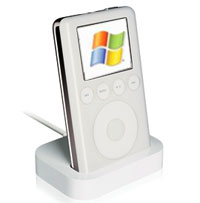 Apple may be forced to shell out royalties to Microsoft for every single iPod it sells after it emerged that Microsoft was first to file a crucial patent on technology used in its iPod.
Apple may be forced to shell out royalties to Microsoft for every single iPod it sells after it emerged that Microsoft was first to file a crucial patent on technology used in its iPod.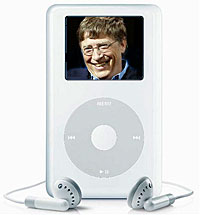 The application doesn’t identify the iPod by name (usual for such petitions), describing a “portable, pocket-sized multimedia asset player” capable of managing MP3 music files including “a song title, a song artist, a song album, a song length”
The application doesn’t identify the iPod by name (usual for such petitions), describing a “portable, pocket-sized multimedia asset player” capable of managing MP3 music files including “a song title, a song artist, a song album, a song length” It seems that there’s a never ending supply of companies ready to shell out for surveys asking the most inane questions.
It seems that there’s a never ending supply of companies ready to shell out for surveys asking the most inane questions.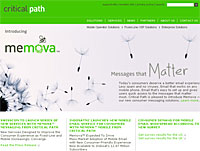 Plundering the depths of inanity further, the survey revealed that 34 per cent of females ranked spouse emails as the most important, and 10 per cent more blokes reckoned mobile email would make their lives easier. Fascinating.
Plundering the depths of inanity further, the survey revealed that 34 per cent of females ranked spouse emails as the most important, and 10 per cent more blokes reckoned mobile email would make their lives easier. Fascinating.